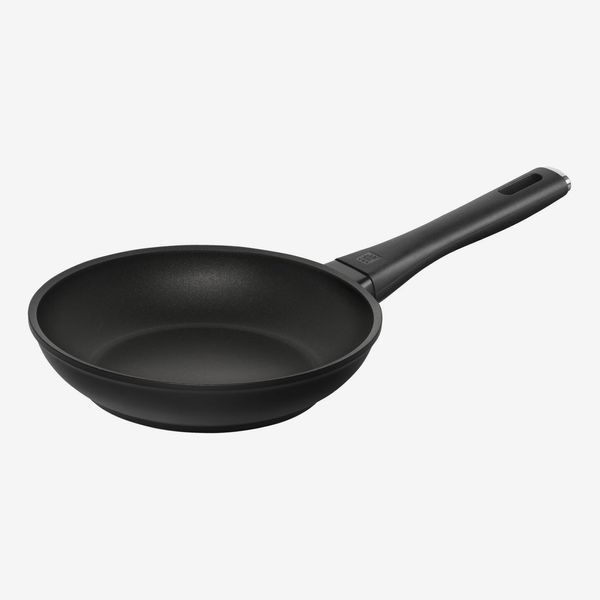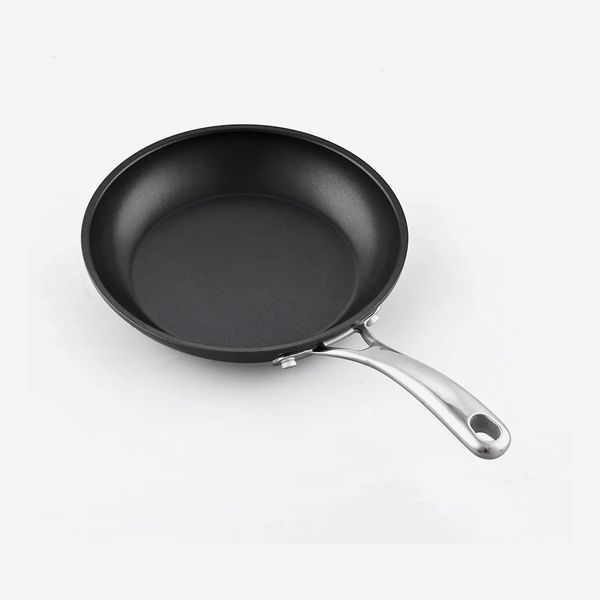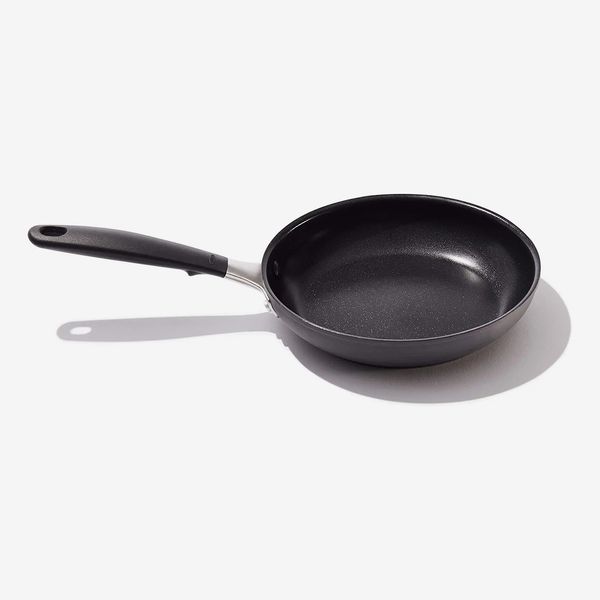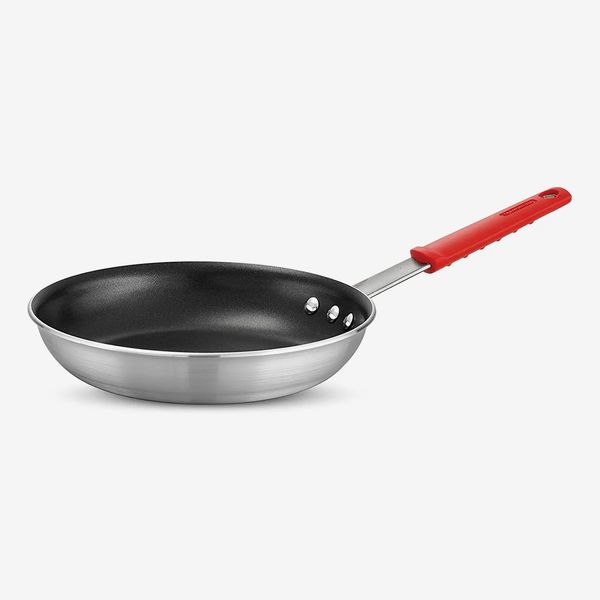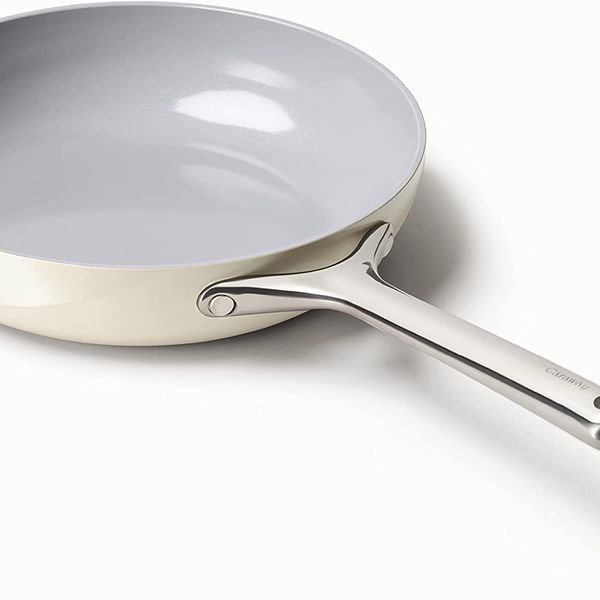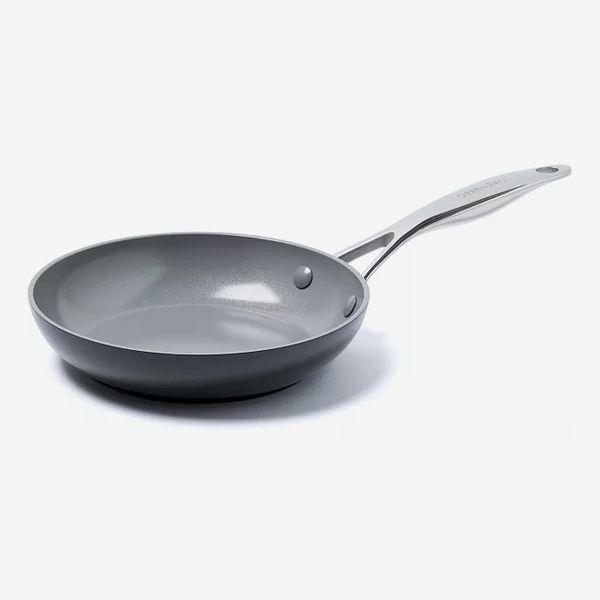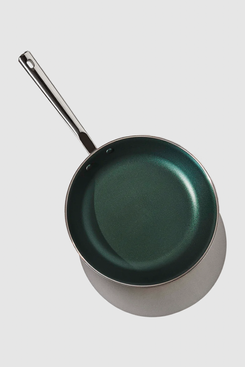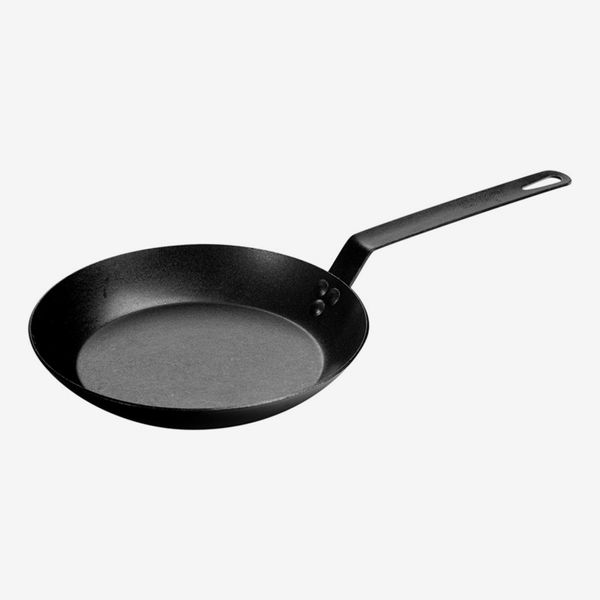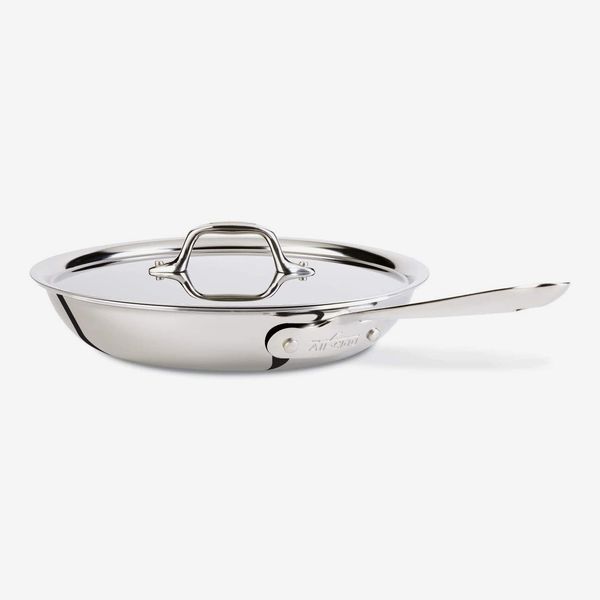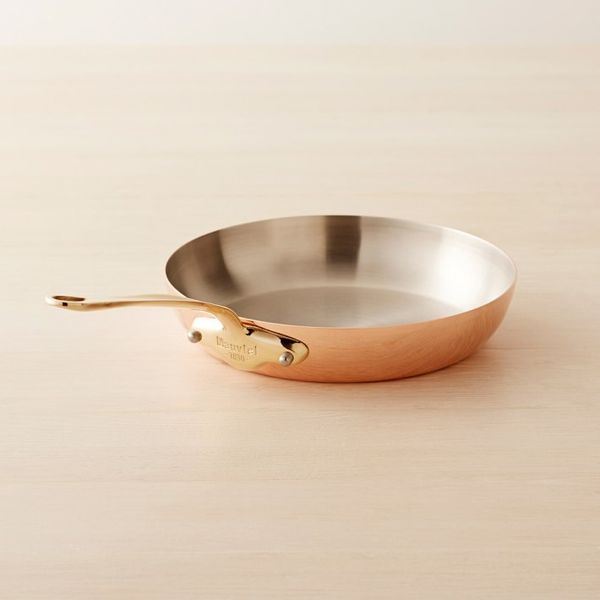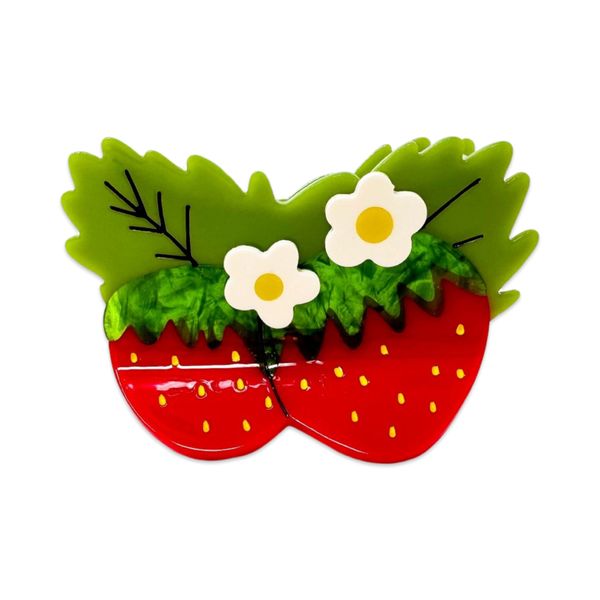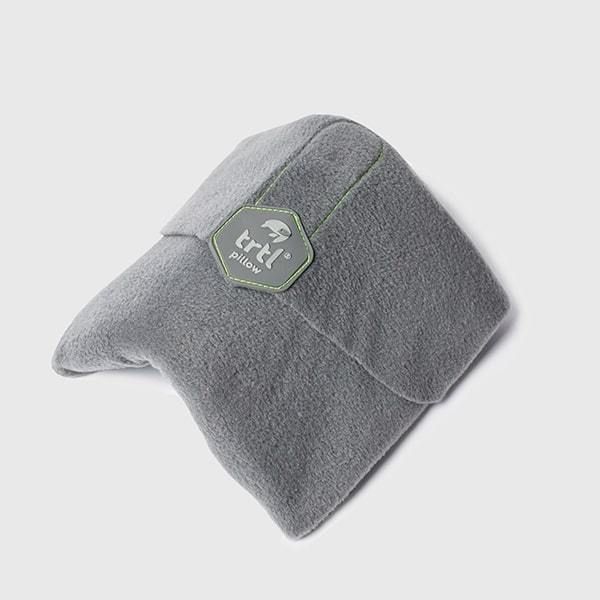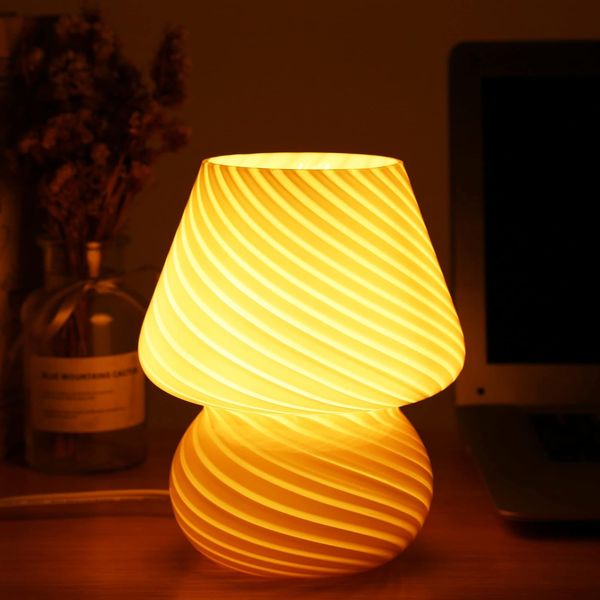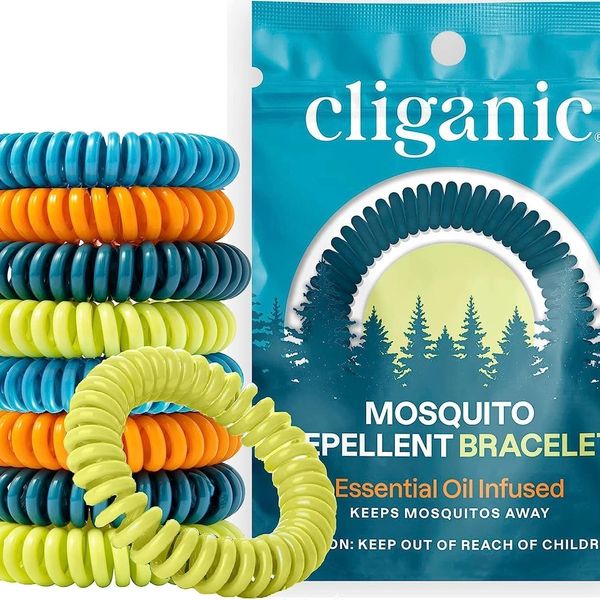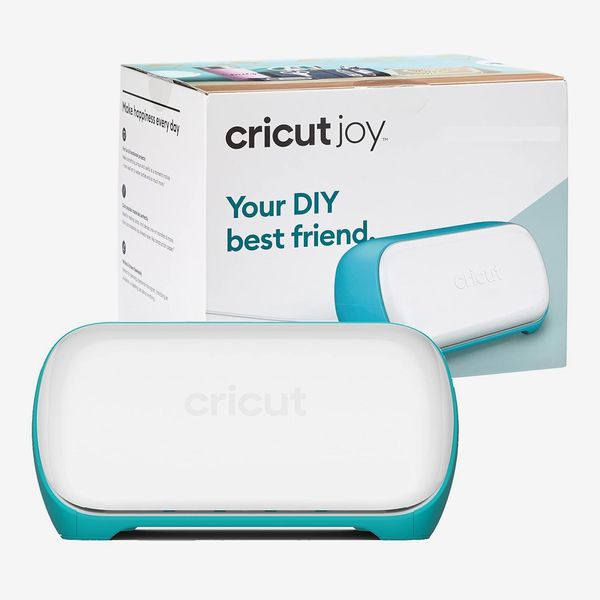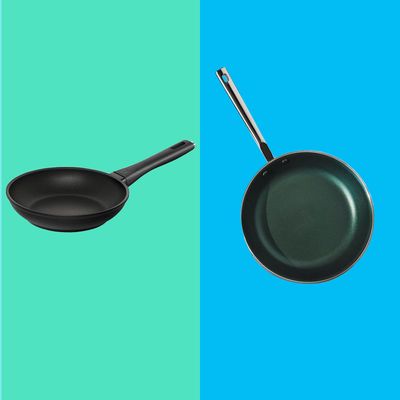
In this article
Nonstick skillets are one of three types of skillets you should probably own — and if I’m being honest, the one I turn to most often. They produce perfectly soft scrambled eggs and fluffy omelets, but they’re also good for getting crispy skin on fish, flipping pancakes with supreme ease, transferring frittatas from stove to oven, and all manner of sauteing. But which one you should buy can also be a bit divisive. Unlike, say, cast iron, where one brand reigns supreme and all others are, for the most part, exceedingly similar, nonstick pans have variations that are cause for debate. Some people say ceramic is best, while others swear by different coatings (there’s a bit more on this below, but I also wrote an entire explainer on nonstick surface materials if you’re interested in taking a deep dive). Some say you should buy the cheapest pan possible, given that these aren’t lifetime pieces of cookware, while others believe that investing more will, in fact, make them last at least a bit longer. My very favorite model falls somewhere in the middle (not cheap, but not break-the-bank expensive, and extremely durable). I tested others I like a lot, too, and am using many of them on an ongoing basis so I can stay up to speed on longevity as I continue to update this piece. And I spoke to professional cooks and recipe developers about the models they use in their own kitchens, as well. Here you’ll find a thorough list of reliable pans, each with distinct qualities, so you can decide what’s best for you.
One note on price: I’ve listed the starting price for each pan here, which in most cases gives you an eight-inch diameter — the perfect size for about two eggs. With the exception of Material Kitchen’s pan (which only comes in 10.5 inches), you can buy larger versions of each, usually somewhere between ten inches (the most versatile size) and 12 inches (great for larger households and bigger-batch cooking). Meanwhile, if you’re shopping for other types of skillets, too, read my guide that includes picks for stainless steel, cast iron, and more.
What we’re looking for
Material
Some nonstick skillets have a ceramic coating, which several of the experts I spoke to prefer, given that it’s allegedly the safest option. But it also tends to lose its nonstick properties the fastest. Plus, in my personal experience, the surface doesn’t provide quite as smooth of a release, even from the beginning. If you don’t feel strongly about ceramic, you’ll notice a lot of other coatings you can go for, most of which advertise themselves under trademarked names, or avoid telling you the exact material makeup altogether. Those models all contain PTFE, the chemical compound that actually makes the pans nonstick. To my mind, PTFE is nothing to be freaked out about (and, in fact, nonstick got a bad reputation due to another chemical compound — one that once was used to manufacture PTFE — that is now outlawed). You can read much more about this here, but at the end of the day, as long as you take care of your pans and keep a watchful eye for when they do start to degrade, you should be totally fine.
To that end, it’s smart to avoid metal utensils that might scratch the surface and release any unwanted chemicals (rubber and wood are much gentler). I also hand-wash all of mine (I find it is one of the fastest dishes to do), but I’ve noted when any experts mention that they put theirs in the dishwasher without negative effect. For this category, I’ve marked each pan as either ceramic or non-ceramic.
Weight
While most nonstick skillets are on the lighter side, their weight can affect how they feel in your hand. If you like a sturdier pan, look for ones that weigh a bit more. If you think you’ll be maneuvering yours around a lot (picking it up, moving it around, transferring from oven to stove), you might want a slightly lighter option.
Oven safety
Beyond using softer cooking utensils and handwashing, one way to ensure your nonstick skillets hold up is to be cautious when putting them in the oven. Though all the brands on this list have declared their skillets oven-safe up to a certain degree, I’ve noted their exact specifications below.
Best overall nonstick skillet
Material: Non-ceramic | Weight: 1.65 pounds | Oven safety: up to 300 degrees
After cooking with the Zwilling Madura in my own kitchen for about three years, I can say that it falls into the sweet spot many of our experts pointed out as being key to a good nonstick-pan purchase: affordable enough and still well-made. It’s my most-used one (and I have a lot), but the surface still looks — and behaves — good as new. The overall build of the pan is excellent, with a nice curve to the walls, a supremely comfortable handle that doesn’t get too hot, and a weight that I find sturdy, but easy enough to lift (you’ll see it falls somewhere in the middle when you look at every skillet on this list).
Recipe developer and writer Rebecca Firkser says, “I love that it’s technically safe for metal utensils, something that I’ve always considered a nonstick no-no. I still try to be cautious when flipping things with my metal fish spatula, tongs, and slotted spoons, but even when I’ve scraped the pan accidentally, I’ve never seen a scratch on the surface.” She also appreciates that the handle stays cool to the touch. Recipe developer and cookbook author Molly Baz notes that particular feature, too. “I like the way it feels in my hand ergonomically,” she says. “I can hold it in one hand without it hurting my wrist or flopping over to the side.” Recipe developer and cookbook author Andy Baraghani likes the flared lip that makes it easy to toss ingredients.
Though many nonstick skillets claim to be oven- and dishwasher-safe, the Zwilling Madura has proven that it holds up when you use it in these ways. I use mine to make frittatas (as do Firkser and Baragahni), and Baz says she has even put it in a 400-degree oven with great success, and has been “putting it in the dishwasher since I bought it four or five years ago, and it shows no signs of degraded coating.”
Best less-expensive nonstick skillet
Material: Non-ceramic | Weight: 1.65 pounds | Oven safety: Up to 300 degrees
For about four years, I also owned an eight-inch Cuisinart Chef’s Classic Nonstick Skillet (reminder: The one listed here is ten inches). I finally recently got rid of it — but that’s a very good life span for a $40 nonstick, especially given that I bought it way before I began testing others for this story and, as such, used it nearly every day. It lived on my stove for eggs (I make scrambled, fried, omelets, or a frittata most mornings), which only require low-to-medium heat and a gentle hand, an easy way to ensure you’re not irritating the surface. But I also used it to crisp up leftover rice, toast nuts, make grilled cheese, reheat proteins (I don’t own a microwave), and more.
Chef and cookbook author Anito Lo is a firm believer in spending less on your nonstick pan in general. She uses a Cook’s Standard Nonstick Hard Anodized Fry Pan, which costs the same price as the Cuisinart. She admits that higher-end brands like All-Clad (our top pick for stainless steel skillets) and Calphalon look nicer but “don’t last any longer” than the Cooks Standard one, which she has owned for about two years. “I like its weight,” she says. “It’s sturdy but not too heavy. And the sides are sloped, so sautéing is easy.”
Best lightweight nonstick skillet
Material: Non-ceramic | Weight: 1.23 pounds | Oven safety: Up to 390 degrees
Oxo is a Strategist-favorite brand, and this skillet is no exception. In the year I’ve been using it, the surface has held up with no scratches or deterioration. It’s worth noting that this is one of the two cheaper pans on this list (the other being the Cuisinart above), and as such, I treat it gently, not putting it in the dishwasher or oven, the latter of which I do with the other two (the Zwilling Madura and the Material below). Still, Oxo maintains it can withstand heat up to 390 degrees. The standout feature, though, is its weight, the lightest on this list. In my experience, you can really feel the difference between even a few ounces. Combined with the comfortable silicone grip, this means maneuvering the pan around the stove, picking it up to toss ingredients like nuts or stir fries, and fully flipping it over for a tortilla española are all easy to achieve.
Best nonstick skillet with removable silicone handle
Material: Non-ceramic | Weight: 1.9 pounds | Oven safety: Up to 400 degrees
The Tramontina is the preferred nonstick skillet of Rodbard, as well as Jessica Battilana, cookbook author and editor at King Arthur Baking. Both use theirs almost daily. “I like how it feels in the hand,” says Rodbard of the riveted, “nonslip” handle, a design feature none of the other skillets on this list have. “Plus, the grip is ovenproof.” Battilana is also a fan of the pan, saying “it’s light but durable, and it doesn’t feel cheap, even though it’s not an expensive pan.” She mentions the handle as well, calling it “super-sturdy” and pointing out the removable silicone cover “so you don’t have to worry about scorching your hands.”
Best ceramic nonstick skillet
Material: Ceramic | Weight: 2.8 pounds | Oven safety: Up to 550 degrees
Despite my disclaimer about ceramic nonstick skillets at the beginning of this story, Strategist senior writer Liza Corsillo swears by the Caraway pan she was gifted over a year ago, saying it still looks brand new. She uses it for all kinds of eggs, grilled cheese, pancakes, and pasta sauces like quick and dirty carbonaras — anything that needs reliable flipping. She attributes this to the gradual slope of the edges as well as to the coating itself. “It truly is nonstick in a way that feels like sorcery,” she says. “I don’t know how they made a pan so slippery and easy to clean without any traditional toxic nonstick materials, but I’m so glad they did. It makes me feel safe using it to cook for my son.” She also loves the look: It’s her preferred skillet to pull out when guests come over, and she likes to serve directly from it.
Best less expensive ceramic nonstick skillet
Material: Ceramic | Weight: 1.5 pounds | Oven safety: Up to 600 degrees
Three experts said GreenPan is their favorite. Recipe developer and food stylist Caroline Lange chose the brand in the beginning because of the nontoxic material, and has now been employing her eight- or ten-inch daily for the last couple of years for all manner of eggs, tahdig, her favorite tofu recipe, to reheat leftovers, and more (she even used them to test three different cookbooks). She swears that even with such heavy use, they haven’t worn down at all. “They’re oven-safe — really oven-safe — up to 600 degrees,” she says. “My oven doesn’t even go to 600 degrees! I love a pan that I can start on the stove and transfer to the oven.” She also appreciates how easy they are to clean. “If there’s ever any oil cooked on (like if I fry an egg really hot), scrubbing with a bit of baking soda takes it right off,” she says. For her part, recipe developer and cookbook author Vallery Lomas admits that ceramic “isn’t the most nonstick,” but the material won out for her. She, too, appreciates the fact that it can go into the oven. “I’ve even made a galette in it,” she says. Alana Kyser, cookbook author and writer of Fix, Flair, Feast, uses her GreenPans regularly, noting that they lasted her two years before they started to show wear. “The golden rule in my book for nonstick is no high heat,” she says. “I don’t use any metal utensils on mine and never put them in the dishwasher.”
Best nonstick skillet for high heat
Material: Non-ceramic | Weight: Five pounds | Oven safety: Up to 500 degrees
Even though Material’s skillet doesn’t claim to hold up to the highest heat in the oven (that would be the pan above), I have found it to be unparalleled on the stove. The inside is made from copper, a material that “conducts heat, retains heat, and then cools down in an incredibly exacting way,” says Daniel Cutler, co-owner–chef of Ronan in Los Angeles. As such, I’ve found it to be particularly effective for foods where you’re trying to get a bit of color, like lacy-edged fried eggs, crispy rice, and hashes. Recipe developer and cookbook author Hetty McKinnon also owns this skillet, which she calls the most durable one in her arsenal. “After a year, it’s not even close to being trashed,” she says. (I’ve had mine for more than two years and can attest to the same.) “It heats up super quickly and cooks evenly. It also feels balanced and light in my hand, which is such a nice change from my cast iron.” One final plus: The Coated Pan is, in my opinion, the most attractive on this list, with a beautiful angled handle and understated yet distinctive colors for the coating.
A note on the Our Place Always Pan 2.0
As with our story on the best skillets of varying types, I have removed the original Our Place Always Pan from this list, which I had previously recommended as the best nonstick skillet with high sides. In spring of 2023, the brand retired that version and released the Always Pan 2.0. The main difference between the products is a new and, according to the brand, improved nonstick coating that will last for longer and has the ability to go in the oven.
I appreciate these changes and still think the overall build of the pan is good. The high sides offer protection from splatter. The tight-fitting lid is handy: Depending on how you place it, it has the option of fully closing or leaving a small opening for steam to escape. The pour spout is smart, making it a pan that can handle saucy dishes.
However, after testing out the updated version for nine months, there was one issue I couldn’t get over: It has a different handle design with a hole that runs through the length. Because of this, it spurts out steam and liquid and is burning hot to the touch. I decided to omit the skillet because, given this, I simply don’t think it’s worth the steep price point.
Some other skillets we’ve written about
Our experts
• Rebecca Firkser, recipe developer and writer
• Molly Baz, recipe developer and cookbook author
• Andy Baraghani, recipe developer and cookbook author
• Liza Corsillo, Strategist senior writer
• Anito Lo, chef and cookbook author
• Matt Rodbard, food writer, editor, and cookbook author
• Jessica Battilana, editor at King Arthur Baking and cookbook author
• Caroline Lange, recipe developer and food stylist
• Vallery Lomas, recipe developer and cookbook author
• Alana Kyser , writer of Fix, Flair, Feast and cookbook author
• Daniel Cutler, co-owner–chef of Ronan
• Hetty McKinnon, recipe developer and cookbook author
• Lani Halliday, owner and founder of Brutus Bakeshop
The Strategist is designed to surface the most useful, expert recommendations for things to buy across the vast e-commerce landscape. Some of our latest conquests include the best acne treatments, rolling luggage, pillows for side sleepers, natural anxiety remedies, and bath towels. We update links when possible, but note that deals can expire and all prices are subject to change.

